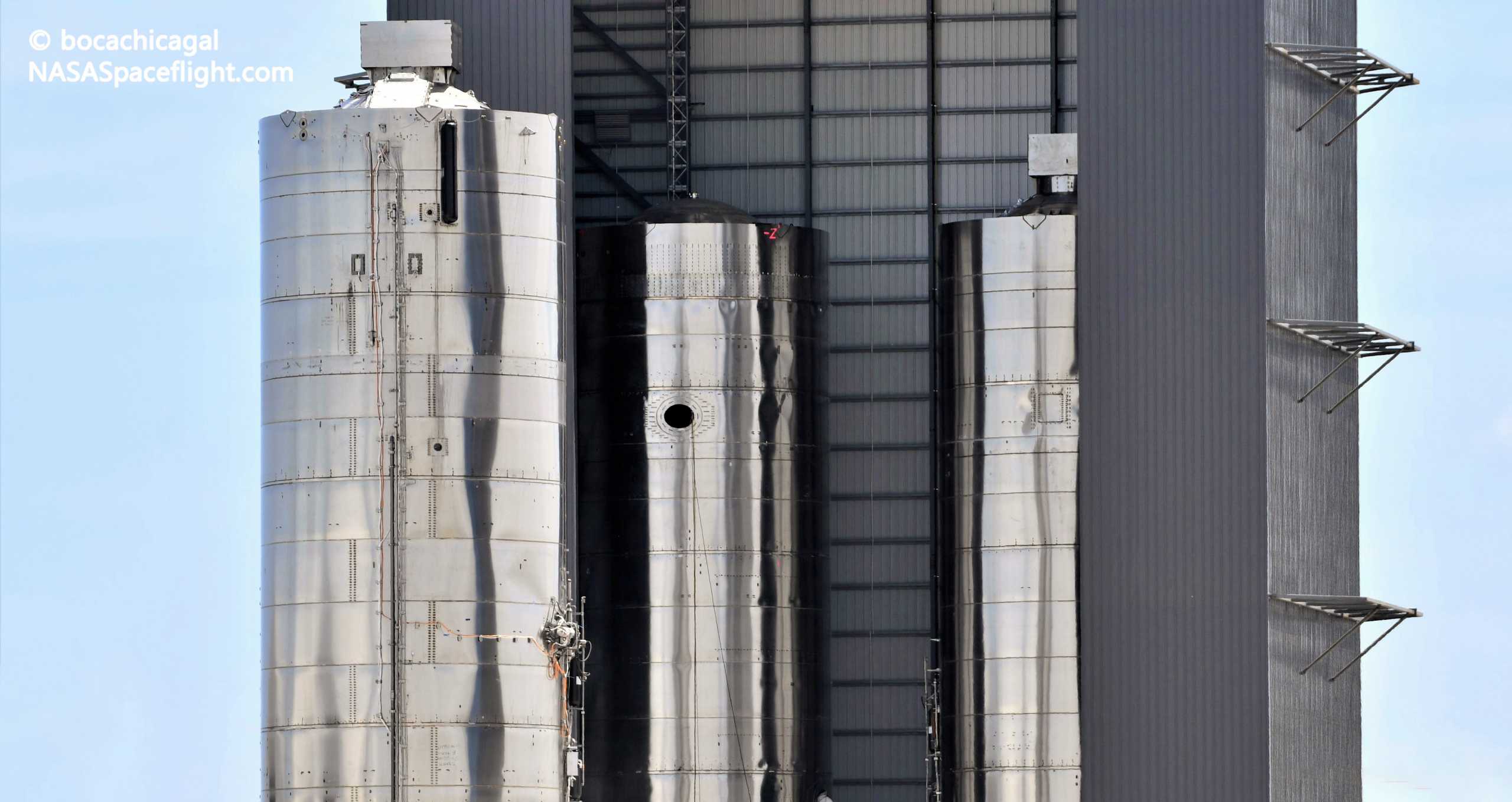
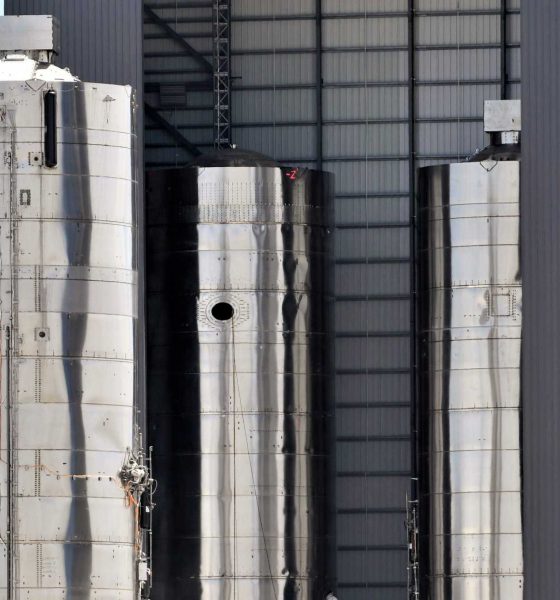
News
SpaceX Starship factory overflowing with new and flight-proven rockets
After a relatively relaxed period of production and testing, SpaceX’s South Texas Starship factory is practically overflowing with new and flight-proven ships as the company prepares for the rocket’s next major tests.
Even before the one-off Starship Mk1 prototype failed a pressure test late last year, SpaceX was in the process of upgrading its Boca Chica production facilities and refining the ship’s design and manufacturing processes. Starship SN1, the first prototype built as part of that upgrade, rolled to the launch pad on February 25th, 2020, followed by Starship SN2 (turned into a test tank) just a week or so later. Starship SN3 and SN4 would both follow in early and late April, ultimately ending with the latter prototype’s spectacularly violent demise in late May.
Over the remaining three or so months, the pace of testing has slowed a bit as SpaceX’s Starship development program enters the full-scale flight testing phase. Starship SN5 began testing on July 1st, followed by SN6 around six weeks later. Both prototypes successfully hopped just 30 days apart. Now, although SpaceX still plans to hop SN5 a second time and may hop SN6 twice, too, the Starship program’s focus has shifted to high-altitude, high-velocity flight tests and the adoption of a new steel alloy.
Presumably in anticipation of a learning curve as that new steel alloy begins to be tested at full-scale for the first times, SpaceX is churning out Starship prototypes at an unprecedented pace. Intriguingly, that production ramp is hinged upon the assumption that a 304L-class steel alloy (compared to the 301 stainless steel used to build SN1 through SN6) will be as good or better than 301 steel in every significant way.
Currently, that assumption isn’t entirely baseless but is still built upon the success of Starship SN7, SpaceX’s first 304L test tank. SpaceX never confirmed its results but it’s believed that that test tank – more of a material demonstrator than an actual structural Starship prototype – surpassed all previous pressure records before it burst in June.
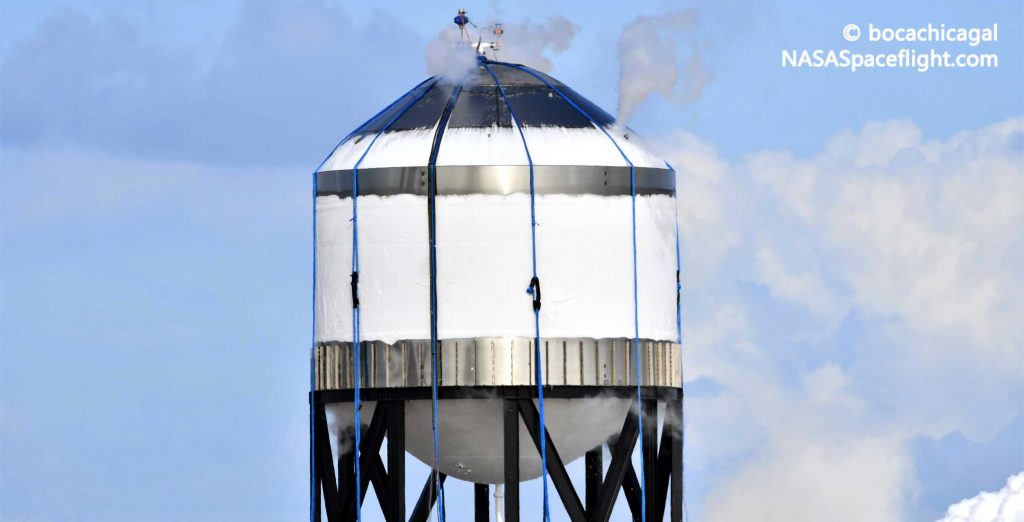
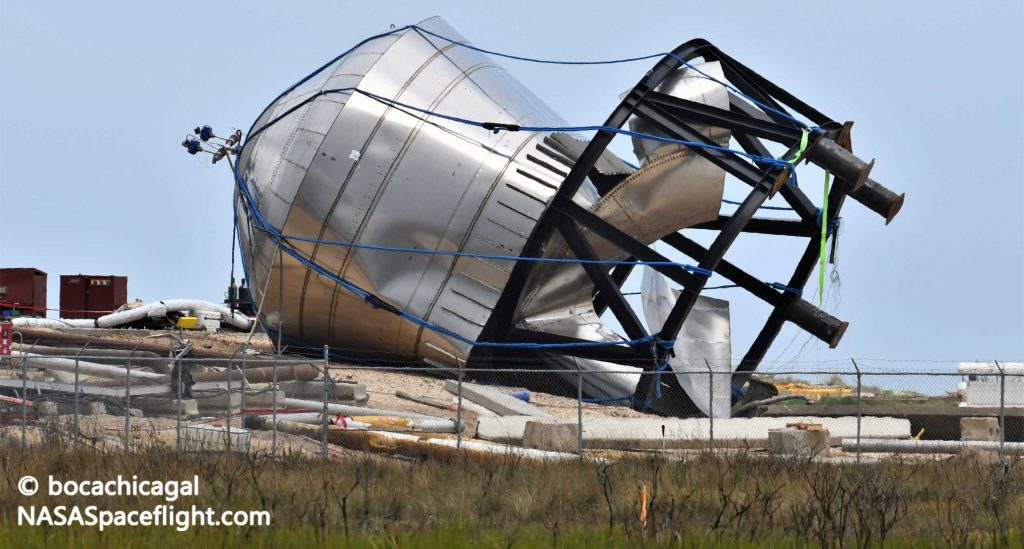
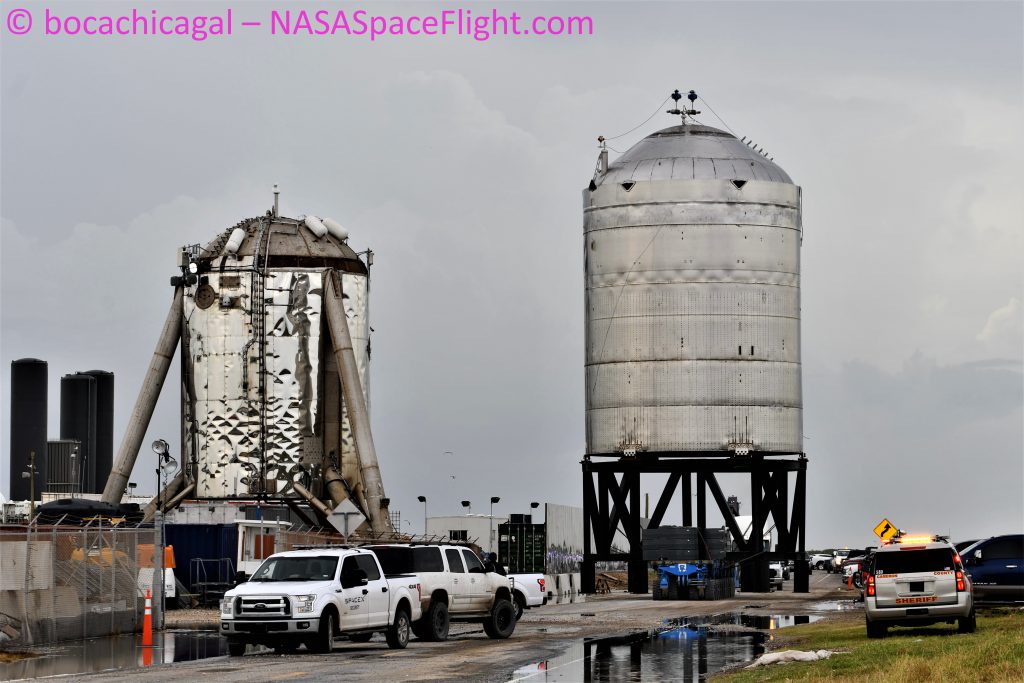
Given that SN7 performed quite well, it’s at least a bit less surprising that SpaceX is hinging months of work and at least four full-scale Starship prototypes on an otherwise unproven steel alloy. The next big test for 304L Starships will be a second test tank known as SN7.1. Rolled to the test site on September 7th, essentially as soon as Starship SN6 was safed and returned to the factory after its hop debut, SN7.1 is significantly more complex than its sibling and will test a ~304L Raptor mount (thrust puck) and skirt section. The forces and general conditions those new parts will be subjected to are substantially different than most of what SN7 was subjected to, meaning that there is a chance that 304L steel is less optimal in different scenarios.
With any luck, SN7.1’s test campaign – scheduled to begin as early as 9pm CDT (UTC-5), September 10th (today) – will be a flawless success, proving that SpaceX’s new steel alloy is universally superior to 301 for Starship-related applications. If that’s the case, Starship SN8 – the first full new-alloy prototype – will likely be fully outfitted with a nosecone and header tanks before beginning acceptance testing.
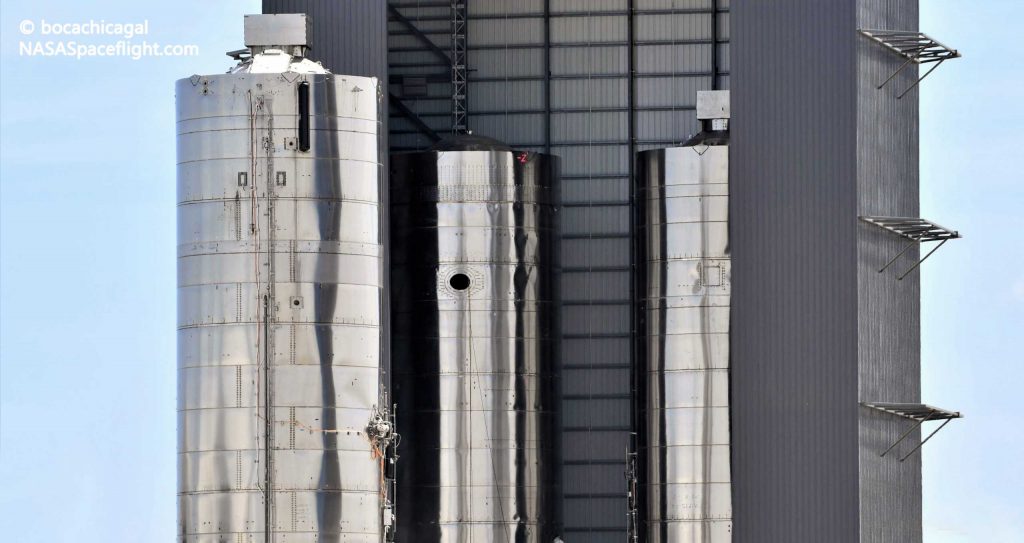
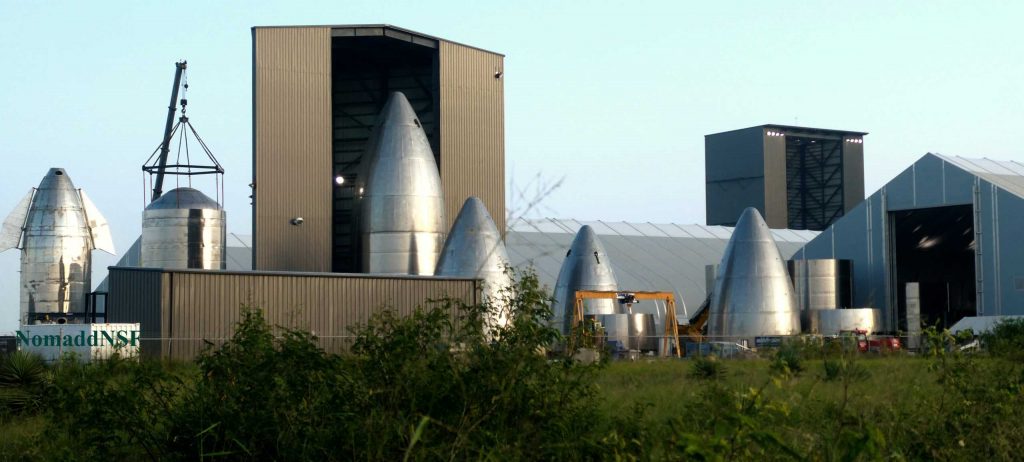
Eventually, if SN7.1 aces its tests and SN8 performs well during preflight preparations, Starship SN8 could become the first prototype to launch with a full nose, header tanks, and flaps, as well as the first to fly with three Raptor engines. If Starship SN8 fails for any reason or is damaged during testing, though, it appears that SpaceX will have no shortage of ships built out of the same new steel alloy to choose from.
In just the last ten days, labeled parts and rings for Starships SN9, SN10, and SN11 have all been spotted, implying that SpaceX is concurrently building at least four new Starships. Notably, both Starships SN9 and SN11 already appear to have some of the studs needed for heat shield tile installation affixed to sections of their steel hulls. Based on the sheer number of steel ring stacks spotted over the last week, it’s also safe to assume that SN9’s tank section (and possibly SN10’s, too) is largely prefabricated.
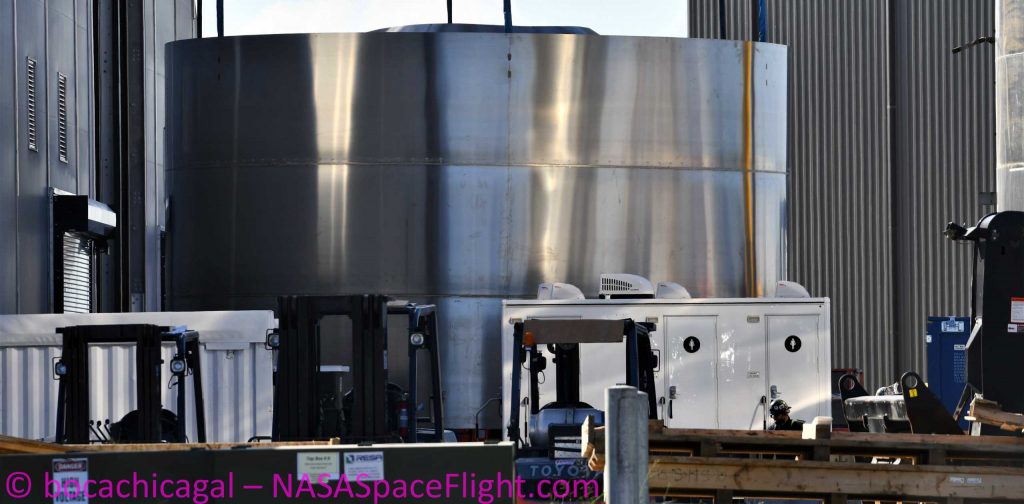
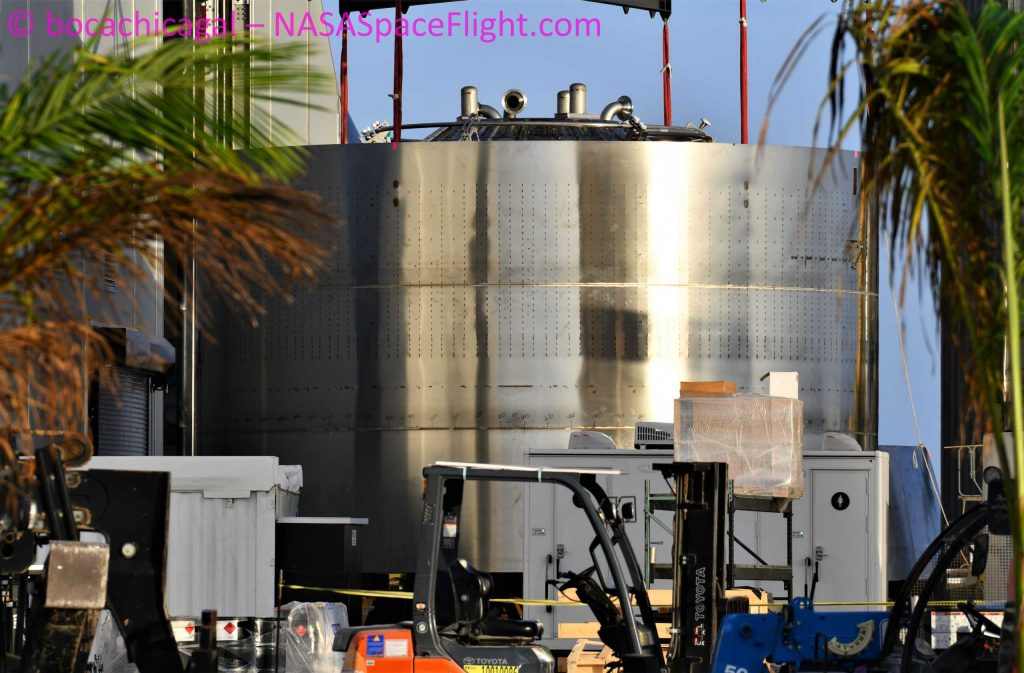
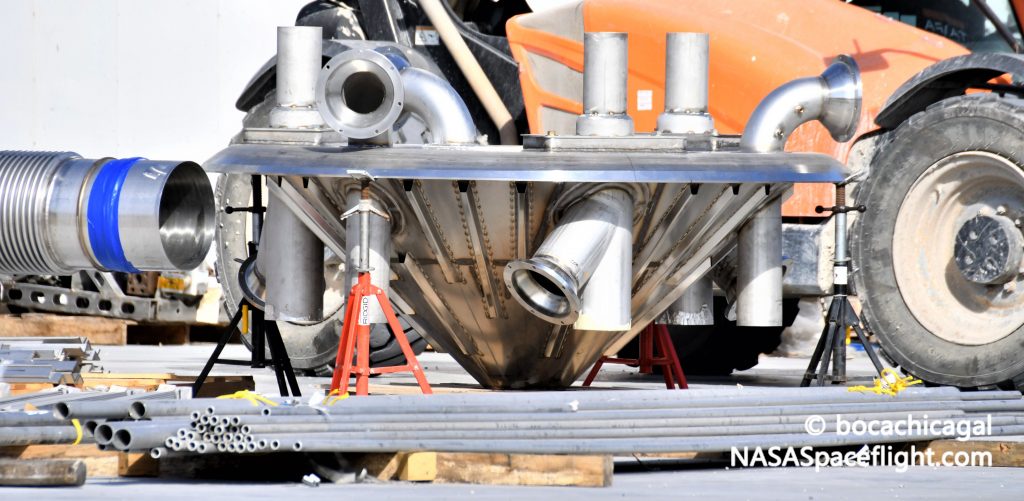
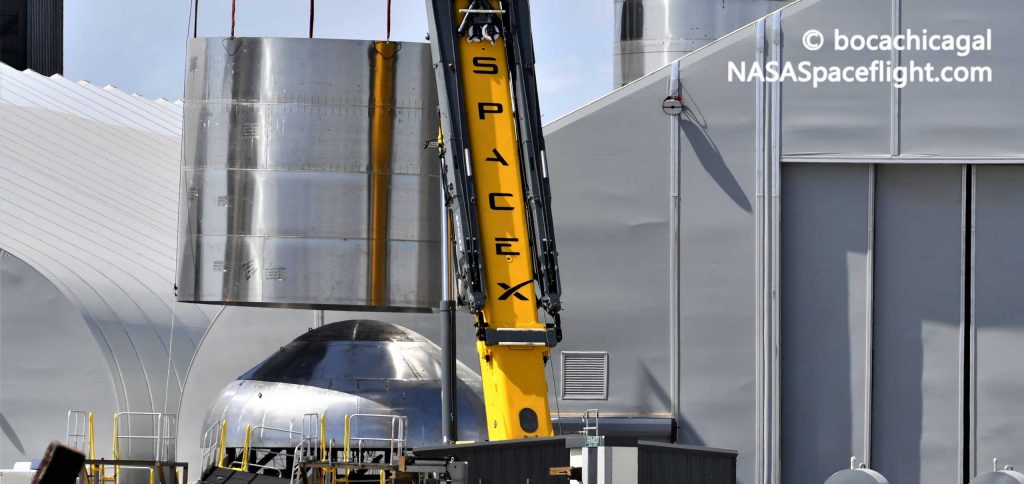


Assuming two of the in-work nosecones are ultimately meant for flight, SpaceX may already have enough hardware on hand to fully assemble two Starships (presumably SN8 and SN9) – including nosecones, header tanks, nose rings, and flaps. It’s safe to say that if SN7.1 achieves its goals, preparations for the first triple Raptor hop, 20 km (~12 mi) test flight, and skydiver-style landing attempt could come together incredibly quickly.
Check out Teslarati’s Marketplace! We offer Tesla accessories, including for the Tesla Cybertruck and Tesla Model 3.

News
Tesla FSD fleet is nearing 7 billion total miles, including 2.5 billion city miles
As can be seen on Tesla’s official FSD webpage, vehicles equipped with the system have now navigated over 6.99 billion miles.

Tesla’s Full Self-Driving (Supervised) fleet is closing in on almost 7 billion total miles driven, as per data posted by the company on its official FSD webpage.
These figures hint at the massive scale of data fueling Tesla’s rapid FSD improvements, which have been quite notable as of late.
FSD mileage milestones
As can be seen on Tesla’s official FSD webpage, vehicles equipped with the system have now navigated over 6.99 billion miles. Tesla owner and avid FSD tester Whole Mars Catalog also shared a screenshot indicating that from the nearly 7 billion miles traveled by the FSD fleet, more than 2.5 billion miles were driven inside cities.
City miles are particularly valuable for complex urban scenarios like unprotected turns, pedestrian interactions, and traffic lights. This is also the difference-maker for FSD, as only complex solutions, such as Waymo’s self-driving taxis, operate similarly on inner-city streets. And even then, incidents such as the San Francisco blackouts have proven challenging for sensor-rich vehicles like Waymos.
Tesla’s data edge
Tesla has a number of advantages in the autonomous vehicle sector, one of which is the size of its fleet and the number of vehicles training FSD on real-world roads. Tesla’s nearly 7 billion FSD miles then allow the company to roll out updates that make its vehicles behave like they are being driven by experienced drivers, even if they are operating on their own.
So notable are Tesla’s improvements to FSD that NVIDIA Director of Robotics Jim Fan, after experiencing FSD v14, noted that the system is the first AI that passes what he described as a “Physical Turing Test.”
“Despite knowing exactly how robot learning works, I still find it magical watching the steering wheel turn by itself. First it feels surreal, next it becomes routine. Then, like the smartphone, taking it away actively hurts. This is how humanity gets rewired and glued to god-like technologies,” Fan wrote in a post on X.
News
Tesla starts showing how FSD will change lives in Europe
Local officials tested the system on narrow country roads and were impressed by FSD’s smooth, human-like driving, with some calling the service a game-changer for everyday life in areas that are far from urban centers.

Tesla has launched Europe’s first public shuttle service using Full Self-Driving (Supervised) in the rural Eifelkreis Bitburg-Prüm region of Germany, demonstrating how the technology can restore independence and mobility for people who struggle with limited transport options.
Local officials tested the system on narrow country roads and were impressed by FSD’s smooth, human-like driving, with some calling the service a game-changer for everyday life in areas that are far from urban centers.
Officials see real impact on rural residents
Arzfeld Mayor Johannes Kuhl and District Administrator Andreas Kruppert personally tested the Tesla shuttle service. This allowed them to see just how well FSD navigated winding lanes and rural roads confidently. Kruppert said, “Autonomous driving sounds like science fiction to many, but we simply see here that it works totally well in rural regions too.” Kuhl, for his part, also noted that FSD “feels like a very experienced driver.”
The pilot complements the area’s “Citizen Bus” program, which provides on-demand rides for elderly residents who can no longer drive themselves. Tesla Europe shared a video of a demonstration of the service, highlighting how FSD gives people their freedom back, even in places where public transport is not as prevalent.
What the Ministry for Economic Affairs and Transport says
Rhineland-Palatinate’s Minister Daniela Schmitt supported the project, praising the collaboration that made this “first of its kind in Europe” possible. As per the ministry, the rural rollout for the service shows FSD’s potential beyond major cities, and it delivers tangible benefits like grocery runs, doctor visits, and social connections for isolated residents.
“Reliable and flexible mobility is especially vital in rural areas. With the launch of a shuttle service using self-driving vehicles (FSD supervised) by Tesla in the Eifelkreis Bitburg-Prüm, an innovative pilot project is now getting underway that complements local community bus services. It is the first project of its kind in Europe.
“The result is a real gain for rural mobility: greater accessibility, more flexibility and tangible benefits for everyday life. A strong signal for innovation, cooperation and future-oriented mobility beyond urban centers,” the ministry wrote in a LinkedIn post.
News
Tesla China quietly posts Robotaxi-related job listing
Tesla China is currently seeking a Low Voltage Electrical Engineer to work on circuit board design for the company’s autonomous vehicles.

Tesla has posted a new job listing in Shanghai explicitly tied to its Robotaxi program, fueling speculation that the company is preparing to launch its dedicated autonomous ride-hailing service in China.
As noted in the listing, Tesla China is currently seeking a Low Voltage Electrical Engineer to work on circuit board design for the company’s autonomous vehicles.
Robotaxi-specific role
The listing, which was shared on social media platform X by industry watcher @tslaming, suggested that Tesla China is looking to fill the role urgently. The job listing itself specifically mentions that the person hired for the role will be working on the Low Voltage Hardware team, which would design the circuit boards that would serve as the nervous system of the Robotaxi.
Key tasks for the role, as indicated in the job listing, include collaboration with PCB layout, firmware, mechanical, program management, and validation teams, among other responsibilities. The role is based in Shanghai.
China Robotaxi launch
China represents a massive potential market for robotaxis, with its dense urban centers and supportive policies in select cities. Tesla has limited permission to roll out FSD in the country, though despite this, its vehicles have been hailed as among the best in the market when it comes to autonomous features. So far, at least, it appears that China supports Tesla’s FSD and Robotaxi rollout.
This was hinted at in November, when Tesla brought the Cybercab to the 8th China International Import Expo (CIIE) in Shanghai, marking the first time that the autonomous two-seater was brought to the Asia-Pacific region. The vehicle, despite not having a release date in China, received a significant amount of interest among the event’s attendees.








